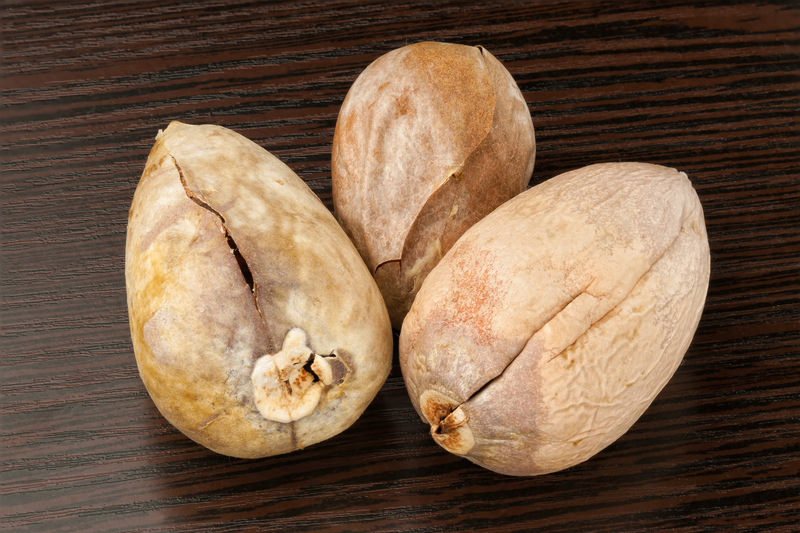Hedge Trimming Skills: Transforming Gardens with Shapes and Creativity
Posted on 13/06/2025
Hedge Trimming Skills: Transforming Gardens with Shapes and Creativity
Hedges have long been the backbone of garden design, acting as boundaries, privacy screens, or backdrops for vibrant flowerbeds. Yet, hedge trimming skills take these living walls to the next level, offering the chance to express creativity while enhancing the visual appeal and health of your garden. In this comprehensive article, we'll explore the essential techniques, creative inspirations, and practical guidance needed to transform your garden with expertly shaped hedges.
Why Master Hedge Trimming?
Hedge maintenance is much more than a routine chore -- it's an art. Creative hedge trimming, also known as topiary, can completely redefine a landscape, making ordinary hedges into extraordinary features. Some of the key reasons to learn expert hedge shaping skills include:
- Enhances curb appeal and increases property value.
- Encourages healthy, dense growth for a fuller, greener hedge.
- Offers an outlet for gardening creativity through imaginative forms and patterns.
- Improves privacy and wind protection, and reduces noise.
- Maintains the overall health and longevity of your hedge plants.
The Art and Science of Hedge Shaping
A well-shaped hedge demonstrates both horticultural know-how and artistic ability. Whether you're aiming for neat, straight lines, soft curves, or animal-shaped topiaries, these projects require attention to detail, patience, and the right tools. Let's delve deeper into the skills and methods you need to succeed.

Understanding Different Types of Hedge Shapes
Before you start snipping away, it's crucial to understand the diverse forms you might employ. Mastering these will expand your hedge shaping skills and set your garden apart.
Classic Shapes
- Rectangular and Square Hedges: Provide strong structure and formality to a landscape. They're common for borders and boundary lines.
- Rounded and Dome Shapes: Soften the garden's look and are ideal for focal points or as a contrast to linear forms.
- Tapered or A-line Hedges: Wider at the base and narrower at the top, this shape lets sunlight reach lower branches and promotes fuller growth.
Advanced and Creative Hedge Designs
- Topiary Art: Clip hedges into abstract shapes, animals, spirals, or geometric patterns--limited only by your imagination.
- Wavy or Cloud Pruning: Create undulating, cloud-like forms for a whimsical, Japanese-inspired garden look.
- Archways and Tunnels: Shape tall hedges to form magical green passageways.
- Lettering and Patterns: Make bold statements with words or intricate designs trimmed into hedges.
*Developing these hedge design skills can elevate any outdoor space, turning boundaries into natural works of art.*
Essential Tools for Expert Hedge Trimming
Possessing the right tools is crucial to mastering hedge cutting techniques with precision. Here are the primary instruments every hedge artist should have:
- Hedge Shears: Large, scissor-like tools perfect for shaping straight edges or gentle curves.
- Pruning Secateurs: Essential for detail work and removing small branches.
- Electric or Battery-Powered Hedge Trimmers: Save time and effort for longer or thicker hedges, especially in bigger gardens.
- Loppers: For cutting thicker branches that shears or trimmers cannot handle.
- String Lines and Stakes: Help create symmetrical and straight lines for a professional look.
- Ladders or Platforms: Ensure safety and access for tall hedges.
- Protective Equipment: Such as gloves, safety goggles, and ear protection, especially when using power tools.
*Quality equipment makes a significant difference in achieving professional hedge trimming results*.
Mastering Core Hedge Trimming Techniques
1. Timing Is Everything: When to Trim?
Knowing when to wield your shears is as vital as the cutting itself. The best hedge cutting times depend on the species and the desired shape:
- Evergreen hedges: Trim in spring or early summer. Avoid cutting in late summer or autumn, which can lead to winter damage.
- Deciduous hedges: Best trimmed in late winter or early spring, before new growth starts. Light trims after new shoots appear can also refine shapes.
- Flowering hedges: Prune after flowering finishes to avoid cutting off next season's buds.
2. Creating Clean Lines and Shapes
For straight edges or geometric designs, use string lines, stakes, or cardboard templates as guides. Move slowly and steadily, stepping back frequently to inspect your work from different angles. Remember:
- Always keep blades sharp for neat, healthy cuts.
- Trim the sides of the hedge before the top, ensuring balance and symmetry.
- For tapering, hold shears or trimmers at a slight angle so that the hedge is wider at the base than the top. This technique ensures sunlight can reach all foliage, promoting dense, even growth.
- Avoid cutting too deeply into old wood; most species won't regrow from bare stems.
3. Achieving Creative and Complex Forms
To embark on artistic topiary projects or intricate designs:
- Start by clipping a rough outline. Use flexible wire mesh or wooden frames as a reference for elaborate shapes.
- Work gradually, frequently stepping back to judge proportions and make fine adjustments.
- Use hand shears for detail work to create smooth surfaces and precise lines.
- For cloud pruning, aim for rounded "puffs" connected by narrower stems, mimicking a pile of soft, floating clouds.
Pro Tip: Patience is key! Developing advanced hedge shaping abilities can take several growing seasons of maintenance and refinement.
Top Plants for Shaping Hedges
While many plant species can be pruned into hedges, some are better suited for precise shaping and creative designs. The following are prized by professional gardeners for their dense, controllable growth:
- Boxwood (Buxus): Classic topiary plant, slow-growing, compact, and dense foliage.
- Yew (Taxus): Extremely hardy and tolerant of heavy trimming. Great for formal hedges and topiary.
- Privet (Ligustrum): Fast-growing, forgiving, and very easy to shape.
- Holly (Ilex): Offers evergreen color and interesting berries, tolerates shearing.
- Lonicera nitida: Known as "box honeysuckle," quick to grow and form shapes.
- Laurus nobilis (Bay): Great for aromatic, rounded or lollipop forms.
- Photinia, Escallonia, Pittosporum, and others: Each brings unique texture, color, or growth habits for creative hedge design.
Creative Inspirations: Looking Beyond the Ordinary
To build your creative hedge trimming skills, take inspiration from:
- Historic European Gardens: The Versailles palace gardens showcase grand avenues of sculpted yew and boxwood, intricately patterned parterres, and whimsical topiary.
- Japanese Cloud Pruning: This involves carefully shaped azaleas or pines, evoking clusters of drifting clouds -- a peaceful, meditative look.
- Modern Art Forms: Urban gardens sometimes feature sculpted cubes, spheres, pyramids, or abstract forms for a cutting-edge effect.
- Wildlife and Storybook Themes: Animal shapes, dragons, and fanciful designs bring fun and wonder, delighting children and adults alike.
Let your garden tell a story through shape, form, and originality.
Advanced Tips for Polished, Professional Results
- Regular Maintenance: Shape little and often, rather than letting hedges grow wild between trims. This keeps lines crisp and reduces plant stress.
- Feed and Water: Healthy plants recover better and look more vibrant after pruning. Mulch and fertilize annually, provide sufficient moisture, and watch for pests.
- Manage Pests and Disease: Remove any dead or diseased wood immediately, clean tools between uses, and consider using an organic insecticide or fungicide if needed.
- Adjust For Growth Patterns: Understand the natural tendencies of your hedge species and work with them, not against them, to achieve stable, attractive shapes.
- Sharpen Tools: Clean and oil blades after each use. Dull or dirty blades can rip rather than slice, making plants more vulnerable to disease.
Common Hedge Shaping Mistakes to Avoid
Even skilled gardeners can make errors. Watch for these pitfalls to keep your living sculptures healthy and beautiful:
- Trimming Too Late in the Season: New growth may not harden off before frost, risking dieback.
- Shaping Only the Surface: Avoid "leafy shell" syndrome -- be sure to stimulate growth deeper into the plant for strong structure.
- Ignoring Symmetry: Step back to correct uneven lines before making additional cuts.
- Improper Angling: Slant sides so that base is wider--avoid hedges becoming top-heavy and sparse at the bottom.
- Cutting Into Old Wood on Certain Species: Some plants, like conifers, may not recover or regrow from hard pruning into bare stems.
Sustainable Hedge Care: Keeping Creativity Green
Creative hedge cutting should go hand-in-hand with sustainable gardening practices:
- Compost Clippings: Recycle green waste back into the garden.
- Opt For Native or Drought-Tolerant Species: These require less water and are often more disease-resistant.
- Encourage Wildlife: Gaps and mixed-species hedges provide shelter and food for birds and beneficial insects.
- Limit Chemical Use: Use natural or biological solutions when possible to keep your hedge--and the wider garden ecosystem--healthy.
Transforming Gardens: Real-World Examples
Across the globe, gardens large and small come alive through skilled hedge trimming and creative shapes:
- Home Entryways: Low, geometric box hedges or spiraled evergreens instantly elevate entranceways.
- Cottage Gardens: Billowing, soft-edged hedges frame winding paths, contrasting exuberant borders.
- Formal Landscapes: Crisp yew or privet rectangles border parterre beds and provide structure in expansive grounds.
- Urban Oases: Imaginative topiary in pots brings green art to courtyards and terraces.
- Public Parks and Historic Estates: Topiary peacocks, leafy archways, and playful maze gardens inspire admiration and creativity in all who visit.

How to Start: Your Creative Hedge Trimming Journey
Are you ready to hone your hedge trimming skills and shape your garden's future? Begin with these steps:
- Assess your garden: Take note of existing hedge species and their health.
- Plan your design: Sketch shapes or research styles to suit your garden size and ambience.
- Gather your tools: Invest in quality shears, trimmers, and safety gear.
- Start small: Practice on a less-visible hedge or a potted shrub before tackling major features.
- Keep learning: Attend gardening workshops, join local horticultural groups, or find inspiration in garden books and online tutorials.
- Enjoy the process: Shaping hedges is as much about the journey as the result. Each trim brings you closer to your creative vision.
Conclusion: Shaping Tomorrow's Gardens with Skill and Imagination
Hedge trimming is both a traditional craft and a living art form, blending technical know-how with creativity. Whether you're simply seeking tidier borders or aspiring to sculpt botanical masterpieces, mastering hedge shaping skills will transform your outdoor space and bring joy season after season.
So, pick up your shears and let your imagination run wild. Every hedge is an opportunity -- not just to frame your garden, but to express your personality and showcase nature's living beauty, one creative cut at a time.
Further Reading and Resources
- Books: Topiary and the Art of Training Plants by David Joyce, The Art of Creative Pruning by Jake Hobson.
- Online Guides: Royal Horticultural Society (RHS Hedge Trimming & Topiary Tips)
- Videos: Search YouTube for "Creative Topiary", "Hedge Trimming Techniques", and garden tours for hands-on demonstrations and ideas.
Let hedge artistry become your garden's signature--with every well-placed cut, shape the landscape of your dreams!


